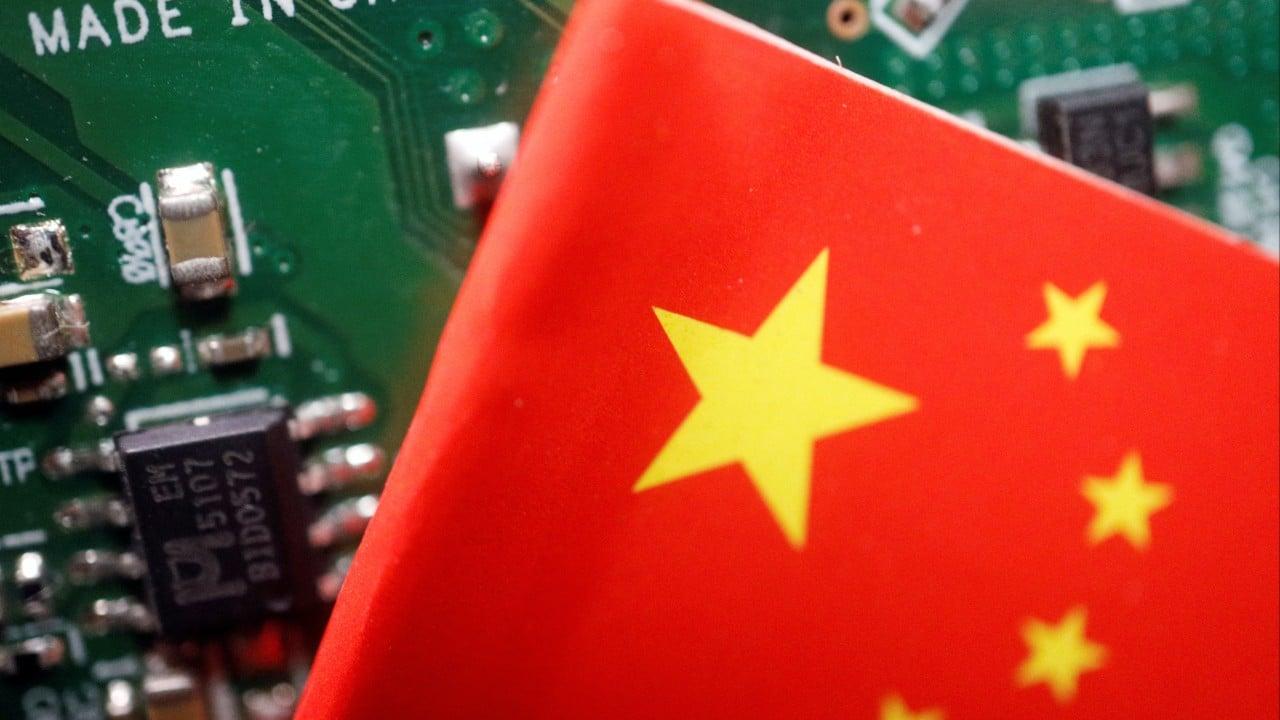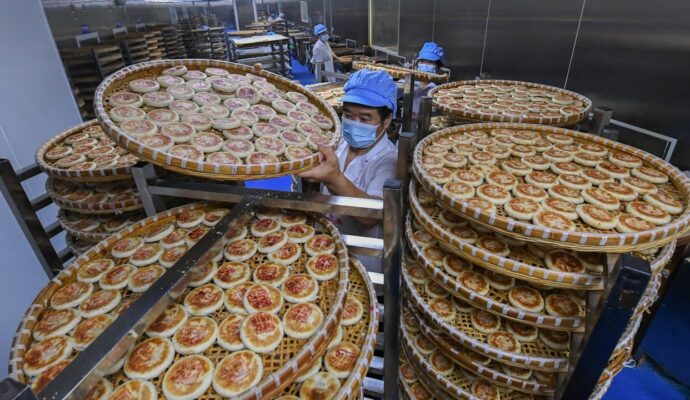
Japanese companies are also waiting for clearer guidance on export controls, he added, as new rules targeting advanced chip technologies are expected in April.
There has been little hard data so far showing stockpiling, although anecdotes align with what happened during previous chip restrictions from Washington. China’s official customs data for January and February will be released in early March.
Japan’s coordination with Washington on the matter alarmed Chinese clients, the South China Morning Post previously reported, with traders of second-hand machines reporting a notable surge in enquiries.
China’s imports of chip-making equipment plunged in November and December, according to official data, owing to Washington’s stricter rules. The country imported 4,789 units in December, down 35.3 per cent year on year.
Annual imports last year shrank 15.3 per cent by volume compared with 2021.
People walk in front of the gate of a SMIC factory in Shanghai in 2020. Photo: EPA-EFE
The China Semiconductor Industry Association, a state-backed industry group, issued a letter this month denouncing any export control deal between the US, Japan and the Netherlands, which has yet to be formalised.
The panic buying from chip firms shows how Washington’s restrictions are impacting Beijing’s pursuit of technological self-reliance. The lofty goal, which focuses on independence from US technologies, is a tall order, as the complex semiconductor supply chain – from raw materials to equipment production – spans several countries around the globe.
Chinese semiconductor manufacturing and equipment companies have to buy a significant number of spare parts and materials partly because “they do not have a domestic supply chain in China” if they are cut off from other countries, according to Dylan Patel, chief analyst at research firm SemiAnalysis.
“This is similar to what Huawei did, which is why it took a considerable amount of time before Huawei’s business slowed,” Patel said, referring to Huawei Technologies’ stockpiling of advanced chips in 2020 before US export restrictions on the telecoms equipment maker came into force.
Even with greater coordination on export restrictions, China will not be completely cut off from supplies from Japan and the Netherlands, said Nicolas Gaudois, head of Asia-Pacific technology research at UBS Investment Bank.
“But it’s not enough to support China’s capacity expansion on the leading-edge, because … it’s necessary to have the whole sequence of equipment for each manufacturing process step, which includes equipment sold by US companies,” he said.
Analysts said that the US restrictions issued last October – which aim to cap China’s logic chips at the 14-nanometre process node, DRAM at 18-nm and 3D NAND flash at 128 layers – effectively take advanced chip making off the table for China, which has more recently focused on more mature nodes at 28-nm level and above. These processes are more cost-efficient for a number of applications, including automotive and the Internet of Things.
While the US, Japan and the Netherlands have yet to officially disclose details of their agreement, observers speculate that it will affect Japanese deep ultraviolet (DUV) system suppliers, whose equipment could be used for advanced chip making. Such suppliers include Nikon, which makes immersion DUVs, and Tokyo Electron, which makes etching and testing equipment.

